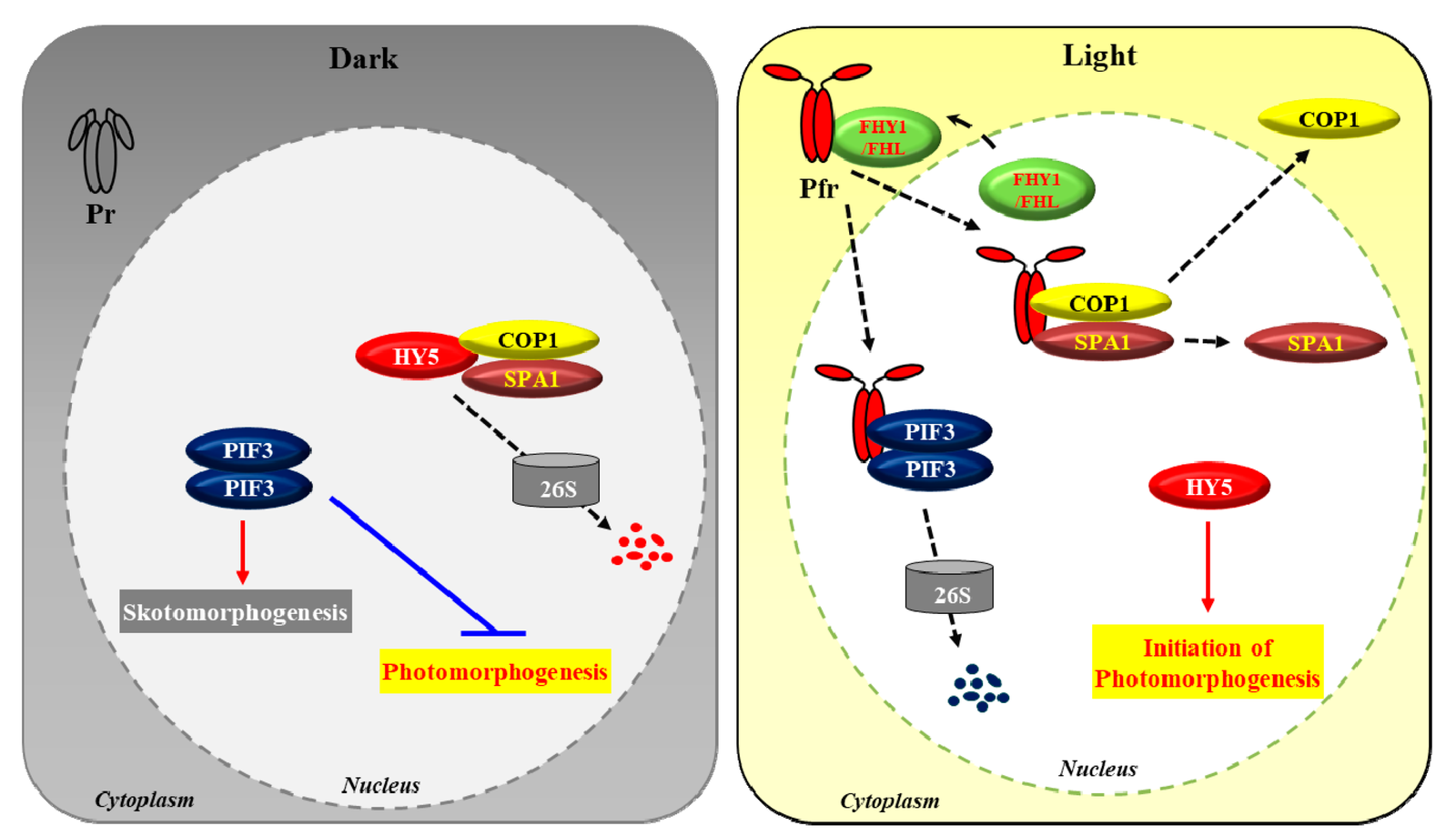Introduction Phytochrome B
Phytochrome B, which is a photoreceptor in plants, is responsible for the way plants grow and develop through feeling whether light quality changes.
A photochromic protein known as PhyB, found in plants, functions as a signal amplifier, ultimately causing the plant to grow by directing it toward sunlight. In a plant’s life cycle, Phytochrome B guides them by determining the time for seeds to germinate, whether stems should elongate, or if flowers are supposed to bloom by detecting changes in the quantity and quality of ambient light, which causes cascades of biochemical signals.
By sensing changes in light and triggering biochemical reactions, plant development is controlled by phytochrome B. Processes such as seed germination, stem growth, and flowering are controlled by it to ensure that plants can adapt & thrive within different light conditions.
Structure and Function
Phytochrome B is a light-sensitive protein that contains a chromophore that assimilates both red and far-red light. Once this absorbs light and becomes activated, there is a change in its shape which in turn results in transmission of signals within plant cells. Consequently, it modulates a host of developmental events by harmonizing with light signals from the environment.
Table of Contents
Regulation of Seed Germination
Seed dormancy and germination are influenced by PhyB, where light is detected. Phytochrome B is activated by red light, furthering germination, and deactivated by far-red light, causing dormancy in its mode. With this mechanism, it becomes possible for seeds to germinate when there is just enough light thus improving the survival rates of plants as well as promoting their growth.
Photomorphogenesis
In a plant’s growth process, phyB, a pigment, performs light-triggered operations that affect the resulting shape of a new plant part called photomorphogenesis. Growth of seedlings, amount of chlorophyll, and root growth about light are the things under its control. Altering hormone levels and gene expression help change plant physiology and structure according to how it is lit up.
Regulation of Stem Growth and Branching
PhyB regulates stem elongation and branching patterns in response to light availability. High red light levels promote stem growth, while far-red light inhibits elongation, influencing plant architecture. This regulation ensures plants optimize light capture and adapt to varying light intensities.
Flowering Induction
Photoperiodism is the mechanism through which PhyB initiates flowering by establishing the day’s length. It directs the changeover from non-generative growth to reproductive development by the period of daylight. Finally, this mode of action enables plants to flower right when conditions around them are most suitable for reproduction.
Leaf Expansion and Senescence
Phytochrome B governs leaf expansion by modulating cell elongation and division in response to light quality. It also delays leaf senescence, maintaining leaf function and longevity under optimal light conditions. This regulation ensures efficient photosynthesis and nutrient use throughout the plant’s life cycle.
Role in Environmental Adaptation
PhyB helps plants survive in different light conditions by influencing growth and development. It thus alters their physiology, shape, and time for flowering which in turn makes it possible for them to survive and produce more offspring.
Interactions with Other Signaling Pathways
Lighting Phytochromes have various effects on hormonal and signaling processes in plants. The phytochrome B crosstalks with plant phytohormones that are auxins, gibberellins, and cytokinins hence affecting growth processes such as seed germination, stem elongation, and flowering induction. They combine signals from other environmental factors to maximize their potential under illumination.
Technological Applications and Future Directions
Understanding what role PhyB played in agriculture and biotechnology had been fathomed. By adjusting Phytochrome B expression or activity, crop growth, yield, and stress tolerance can be made more efficient.
Therefore, upcoming research endeavors are targeted toward using its control mechanisms to come up with improved crops that can do well under certain light conditions thus contributing to sustainable agriculture and food security.
Frequently Asked Questions FAQS
What is Phytochrome B?
Plants use phytochrome B to detect changes in light.
How does Phytochrome B affect seed germination?
In reaction to red light, Phytochrome B enhances seed germination and conserves dormancy under far-red light.
What role does Phytochrome B play in flowering?
Phytochrome B helps in controlling when a plant should bloom, because it detects the duration of light during one day and starts to move from vegetative towards flowering state.
How does Phytochrome B influence stem growth?
Phytochrome B controls stem elongation and branching patterns based on light intensity and quality.
Why is Phytochrome B important for leaf development?
Phytochrome B regulates leaf expansion and delays senescence to optimize photosynthesis and plant longevity.
Conclusion
Phytochrome B is an essential protein for plants to sense light. It is involved in controlling plant growth and development through light perception. This involves regulating seed germination, stem elongation, flowering time, and leaf senescence among others through physiological adjustments to the environment.
Its intricate signaling pathways, Phytochrome B, enable plants to adjust to different light conditions so that they can grow better and survive in various environments. The significance of this protein in controlling the life cycle as well as response patterns of plants is underscored by its capacity to integrate cues from both light and hormones or developmental stages. This is important for any ecosystem or farming practice since it determines how far they will go depending on these factors.
